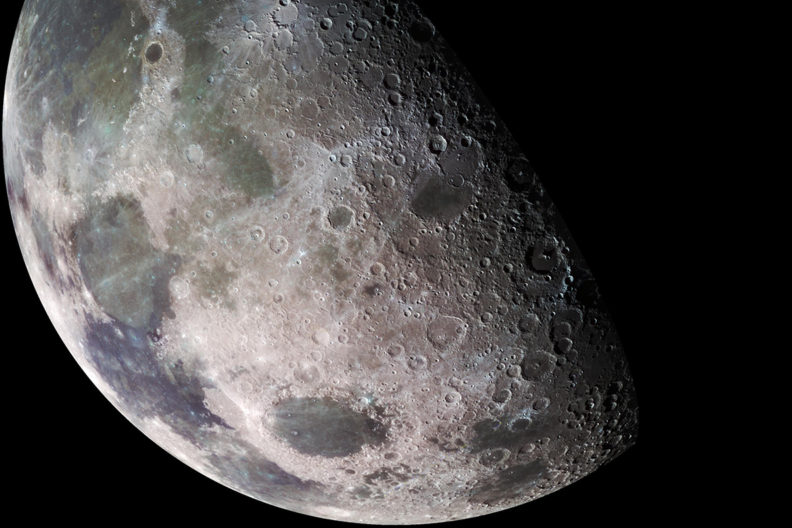In a new paper, astrobiologists say conditions on the lunar surface were sufficient to support simple lifeforms shortly after the moon formed from a debris disk 4 billion years ago and again during a peak in lunar volcanic activity around 3.5 billion years ago. During both periods, planetary scientists think the moon was spewing out large quantities of superheated volatile gases, including water vapor, from its interior.
This outgassing could have formed pools of liquid water on the lunar surface and an atmosphere dense enough to keep it there for millions of years.

The Galileo spacecraft surveyed the moon on Dec. 7, 1992, on its way to explore the Jupiter system in 1995-1997. Credit: NASA/JPL/USGS
“If liquid water and a significant atmosphere were present on the early moon for long periods of time, we think the lunar surface would have been at least transiently habitable,” said Washington State University astrobiologist Dirk Schulze-Makuch.
Why the change?
In 2009-2010, scientists discovered hundreds of millions of metric tons of water ice on the moon. Additionally, there is strong evidence of a large amount of water in the lunar mantle that is thought to have been deposited very early on in the moon’s formation. The early moon is also likely to have been protected by a magnetic field that could have shielded lifeforms on the surface from deadly solar winds.
So life on the moon could have originated much as it did on Earth, but the more likely scenario is that it would have been brought in by a meteorite, Schulze-Makuch said. The earliest evidence for life on Earth comes from fossilized cyanobacteria that are 3.5-3.8 billion years old. During this time, the solar system was dominated by frequent and giant meteorite impacts. It is possible that meteorites containing simple organisms like cyanobacteria could have been blasted off the surface of the Earth and landed on the moon.
“It looks very much like the moon was habitable at this time,” Schulze-Makuch said. “There could have actually been microbes thriving in water pools on the moon until the surface became dry and dead.”






Comments